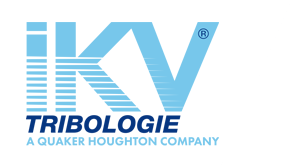Bearing Preparation Procedures
Avoidance of contaminants is essential for optimum performance and durability of your IKV fluorinated lubricants. The cleaning and preparation area should be clean and free from dust and potential contaminants.
In order to ensure optimum adhesion of the grease to the bearing surfaces, preparation of the substrate is required to include cleaning/ removal of other non fluorinated oils and corrosion protective coatings and protection of the bearings surfaces with a compatible fluorinated anti-corrosion reinforced coating.
- Wear gloves and eye protection and do not eat or smoke whilst using.
- The bearing surface must be clean of all trace impurities including protective waxes, greases, oils, cutting fluids, finger prints and protective films.
- Removal of mineral oil, preservative fluids or other non-PFPE based greases are best performed using an aliphatic hydrocarbon solvent (white spirit). A bath may be used to clean components as long as they are rinsed with clean solvent before the next stage.
- After cleaning, ensure that the bearings are completely dried and all traces are removed from the bearing surfaces and housings. Use clean, lint free material if surface wiping/ drying is required.
- If bearing is being stored you may wish to apply a corrosion protection coating. This is also important where part of the bearing is not going to be greased and where corrosion protection is still required.
- Apply IKV FLUOR and ZAROX lubricant using a dedicated cartridge gun, spatula or syringe—taking care not to contaminate the surfaces with bare fingers. The operational environment of the bearing must be taken in to consideration before greasing the bearings i.e. speed, load, size & bearing type. Please contact us for advice if you are unsure.
- Fluorinated lubricants are chemically resistant to non-fluorinated solvents.
- Chlorinated solvents must be avoided as they can cause bearing corrosion.
By definition, the bearing is a built in or attached mechanical part, often standardised and designed to transfer movements, forces and torques with an excellent degree of effectiveness.
Bearings comprise rolling parts (balls, rollers, needles...) and where necessary are in sealed and additional cages or rolling rings.
Expansion gaps are specified by categories:

Cages are generally made of steel, but may be plastic or a cooper alloy. The latter two materials are larger and tend to rub more on the revolving body.
On the other hand they are more commonly used and the amount of lubricants to be added requires adjustment. This also applies when there are no cages on full complement bearings.
Bearings may be supplied sealed. Theses seals are called Z (shield on one side) or ZZ (shields on both sides) for metal seals or RS or 2 RS for synthetic material shields.
The bearing is selected by the equipment’s manufacturer according to operating conditions, assembly and available space. The type of bearing is mainly defined by the loads applied and the rotation speeds.
Bearings have an expansion gap in accordance with their operating temperatures to maintain as the parts expand.
Rings are also heat treated to ensure that the size of the parts remains stable during high temperature stressing.
These bearings are subject to a range of physical or environmental stresses and must ensure the proper the most effective operation of the material for the longuest period of time and at a proper operating noise level. In order to do this, the choice of lubricant is particularly important and requires the following:
- Formation a film of oil to separate the contact areas for every load
- Removal of heat
- Sealing the bearing to prevent foreign, liquid or solid bodies from entering the mechanism
- Reducing operating noise
- Protecting the bearing against corrosion


